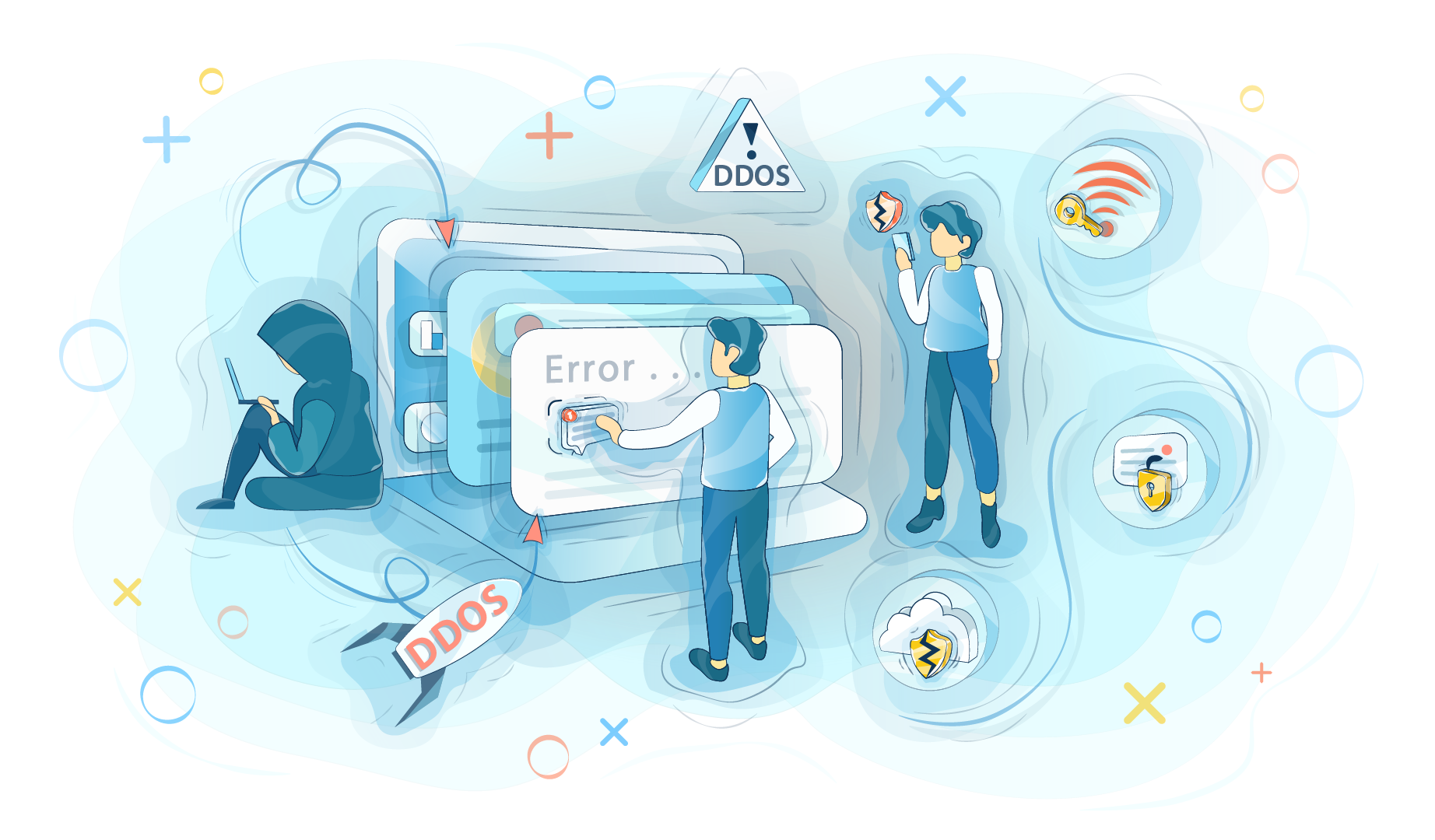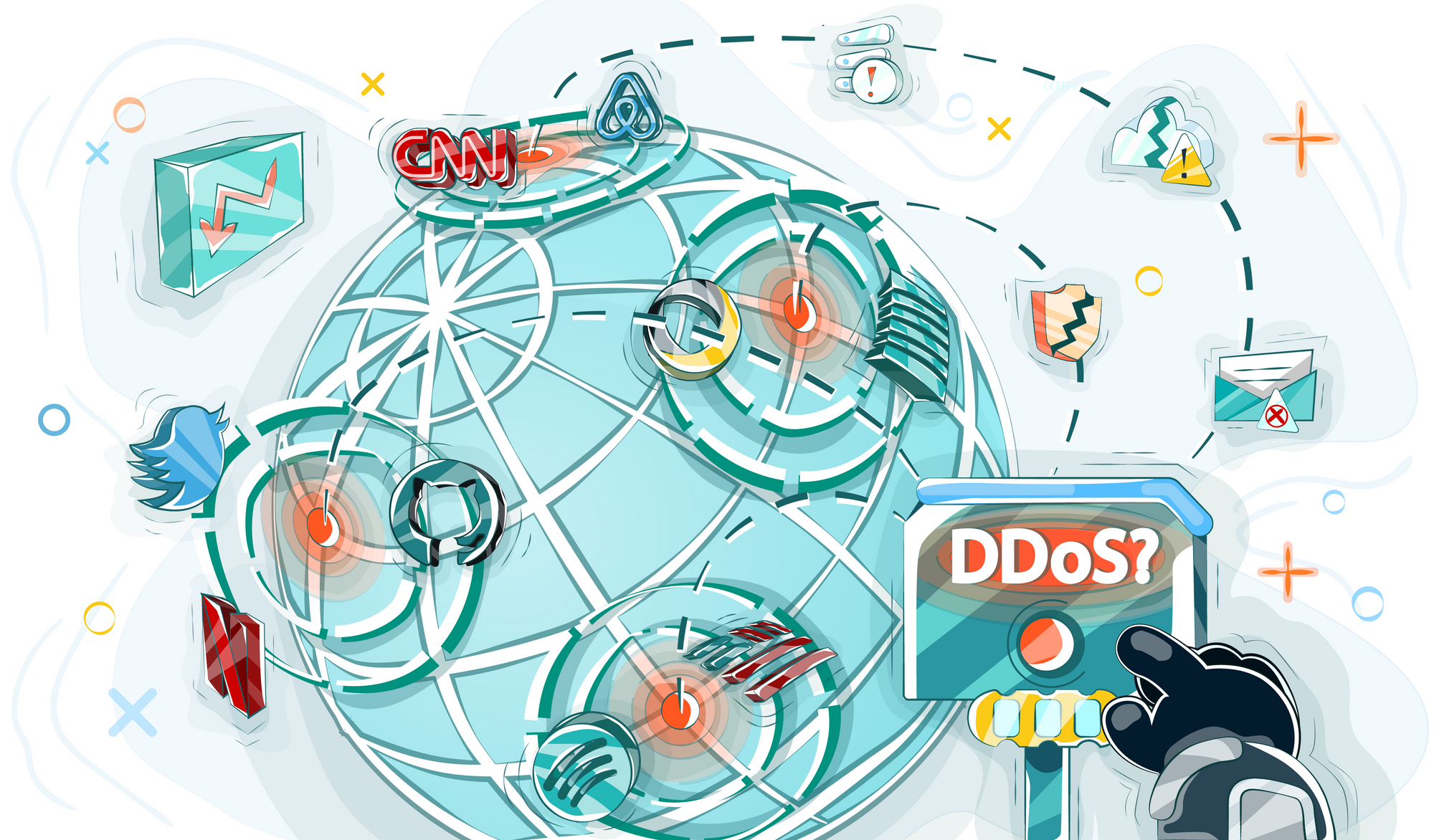If 15 years ago DDoS attacks were something out of the ordinary, now hackers conduct up to several hundred attacks a day. This makes the issue of cybersecurity more and more topical. In this article, we will look at the root of the problem and explain why people resort to cyberattacks and how they are organized. And, of course, we will explain how to protect your website from such interference.
Why are DDoS attacks organized?
The purpose of the cyberattack is to damage the site, but we cannot provide a specific reason. It all depends on exactly what the hacker needs. It can be a banal desire to eliminate a competitor or just a way to "play muscles" in front of friends or society. Below we will highlight a few main reasons why DDoS attacks are most often conducted.
Competition
There are 2 online shops. Both sell products from the same category. At some point, the website of one of them stops working correctly. The user, who cannot buy the necessary product, is looking for another website with a similar assortment. A competitor is increasing sales while another one is trying to solve the problems of the website. Consequently, a company that is able to take online orders is beginning to succeed. The affected competitor's image is falling, the number of customers is decreasing, and business is coming into decline.
The reason that the platform "lies down" may very probably be a DDoS attack. This is a classic example of unfair competition. For small and medium-sized businesses, protection against cyberattacks is becoming an important part of development on the Internet. If you do not take into account this nuance and just create a website without taking care of measures against DDoS attacks, you can lose your acquired status, customers, and profits in a matter of hours.
Hacktivism
It is a social or political act, which is committed by breaking into a protected system. Simply put, it is a way to draw attention to personal ideas or protest online without going out to the rally. DDoS attack is one of the options of hacktivism. The attacker most often remains anonymous and speaks publicly only about his/her grouping or political/social ideas. This type of cyberattack is usually directed at corporate or government sites. A known example of hacktivism is Operation Ababil, organized by Muslim cyber-terrorists against US banks. More details about it and other known attacks we wrote in this article.
Internet activism is also closely intertwined with real protest movements. During the known events in Hong Kong in June 2019, the Telegram app was subjected to a powerful DDoS attack. Obviously, this DDoS attack was aimed at preventing protesters from using this app to coordinate their activities.
There are also many individual hacktivist groupings in the world that prefer to express their ideas through DDoS attacks. Perhaps the most known of them is called Anonymous. An uncentralized grouping of cybercriminals without one leader commits major cyberattacks as a response to the actions of authorities of different countries. Hackers have thus protested against Internet censorship and copyright protection. Private organizations are also often targeted by Anonymous, such as the DDoS attacks against the Church of Scientology. Of course, to be targeted by such a grouping, one must be a company or government organization of high importance. However, the very fact that hacktivism has become a full-fledged and no less harmful option of real protest actions speaks for the importance of cyberdefence.
Extortion
Cyberattacks are often sent to websites with the purpose of blackmailing. Most often as a reward, hackers require ransom money. In such cases, hackers contact the owners of the resources and make demands. Their personalities, for obvious reasons, are not disclosed openly. An illustrative case in runet was in 2014, when "Habr" and some other sites laid down. The attackers demanded $1000 for termination of DDoS attack.
In other cases, blackmailing is resorted to even before the site is laid down. In 2019, a hack group Fancy Bear, whose members positioned themselves as natives of Russia, committed such fraud. The hackers selected the company and sent it an email threatening with a lengthy DDoS attack. To avoid interference, a certain sum had to be paid. A case was made public when the attackers demanded a ransom of 2 bitcoins, which at that time was $15,000.
Nuisance
Some hackers launch DDoS attacks for no reason. Often such an intervention becomes a way to brag or just to have fun. Unfortunately, information on how to organize a cyberattack is publicly available. To direct it to a specific website for dishonest people will not be difficult. Often the target is chosen randomly, and to predict a DDoS attack in this case is impossible.
Even schoolchildren can do this kind of "entertainment". Thus, in 2017, a student from Great Britain, who at the age of 16 developed a program for cyberattacks, went to jail. Even one of the first major Internet crimes of this kind in 2000 made a simple Canadian schoolboy just out of simple harm. The result of such pampering was that large corporations had the loss of billions.
How are DDoS attacks organized?
To launch a cyberattack will not be difficult even for people who have little understanding of the mathematics section. Cybercriminals offer a "professional" organization of DDoS attacks. To do this, hackers create services where they take orders from customers. To order a DDoS attack, you just need to select the power and "target". Direct contact between the client and organizer is not required. This method is most often used by people for whom a cyberattack is a way to eliminate a competitor. In other cases, cybercriminals directly conduct such activities.
You can read about the technical side of the issue in this article. There are several levels and varieties of DDoS attacks that are directed at a specific site. The big problem is that how to direct a DDoS attack can be learnt almost freely. Information is relatively in the public domain, so cybercrime is growing despite the severe penalties for such activities.
New trends are also appearing. Attacks via IoT devices have become more dangerous recently. Various household items from the "Internet of Things" category, from air-conditioners to security systems, have entered our lives tightly, and by 2021 experts predict the active use of more than 28 billion such devices. Hackers do not stand by and infect devices with poor protection with malicious software. A network of tens of thousands of such devices, a botnet can launch a major DDoS attack with a load of up to 600 Gbps.
Is there any punishment for conducting a DDoS attack?
Most countries in the world indeed impose penalties up to prison terms for cyberattacks. In Russia, for example, sanctions are provided for in the Russian Criminal Code. According to Article 272, the attackers for a conducted DDOS attack must pay a fine of 100 to 500 thousand rubles, work on community service or forced labor, or may go to jail for up to 7 years.
Of course, you can rely on the law, but it won't protect you from the cyberattack itself. Statistics of DDOS attacks are inexorably growing every year and even quarter of the year. So, in the middle of 2020 there were 2 times more cyberattacks than at the end of 2019. Given that their causes may be completely different, we can confidently say: no one is immune from DDOS attacks.
So, what to do?
The answer is simple: resort to preventive measures. We have already told you why automated protection is the only logical solution. It is impossible to influence the decision of competitors, intruders or simply hackers. However, with King Server it is quite realistic to minimize the risks.
We offer effective protection against DDoS attacks, which will keep your website safe 24/7. Our team provides:
- geographically distributed filtering;
- connection and adjustment within 10 minutes;
- 24-hour technical support.
Protection by King Server can withstand loads up to 100 Gbps. We offer 4 different rates so that customers can choose the best option for their needs.

























